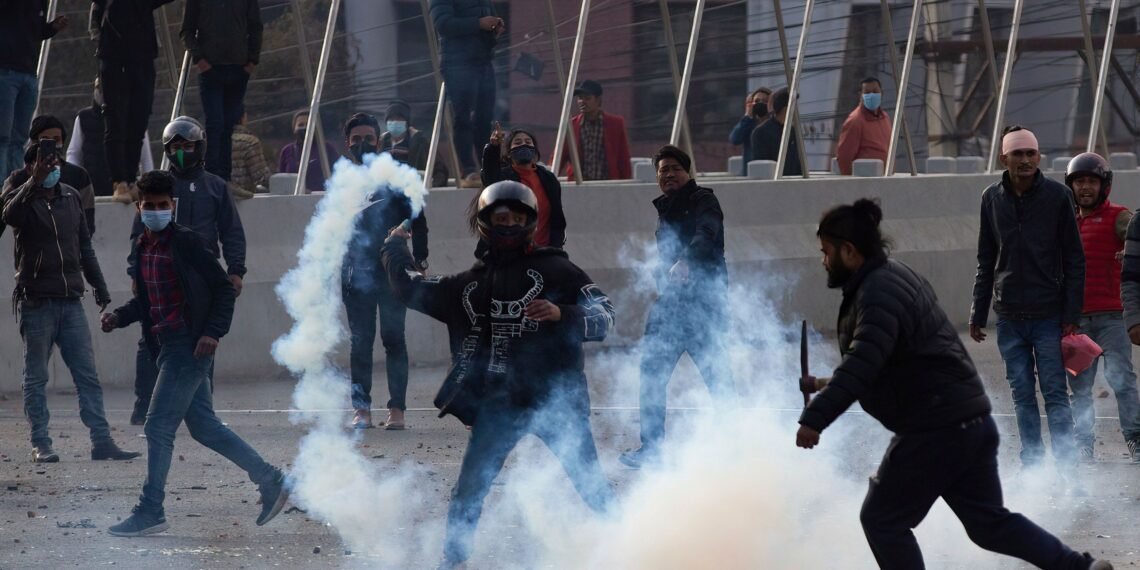A group of protesters clashed with the police in Nepal’s capital Kathmandu on Thursday, demanding the restoration of the monarchy which was abolished around 15 years ago.
Nearly 30 people, including five policemen, were wounded on Thursday as Nepalese riot police deployed batons and tear gas to scatter thousands of protesters from two different political groups involved in conflict with each other while marching on the streets of Kathmandu.

The protesters, waving the national flag and chanting slogans in favour of the former King Gyanendra, attempted to gather on the edge of Kathmandu and tried to move toward the center of the city. Riot police blocked them, beating them with bamboo batons and firing tear gas and a water cannon. There were minor injuries on both sides.

The two political groups, the Youth Organisation Nepal (YON) affiliated to the main Opposition Communist Party of Nepal (Unified Marxist- Leninist) [CPN UML] and supporters of the pro-monarchy Durga Prasai Group clashed with each other while staging anti-government demonstrations. The YON and the pro-monarchist Durga Prasai Group exhibited separate demonstrations against the government in Kathmandu on Thursday. Durga Prasai supporters chanted in favour of restoration of Hindu-status in Nepal whereas the YON group slogans were intended to make an end Prachanda-led regime and break the chain of corruption.
While the members of the YON staged a protest rally at the Tinkune area near the Tribhuvan International Airport, the Durga Prasai group set their agenda in the Balkhu area on the outskirts of Kathmandu.
As per the inputs of PTI news agency, citing eyewitnesses, the security personnel deployed at the venue fired a dozen of tear gas shells and water cannons after the protesters tried to enter the prohibited area in Balkhu. Also, protesters started pelting stones to each other, leading to a escalation of violence.

“We love our king and country more than our lives. Bring back the monarchy. Abolish the republic,” the crowd cried loudly with the allegation against the government and political parties of corruption and poor governance- according to news agencies report.
Prasai, a entrepreneur and former maoist activist claimed the movement as “mass rebellion of the people against the current system”. He also asked Prime Minister Pushpa Kamal Dahal to “surrender before the people and follow their wish about the kind of political system the country should adopt”.
However, Nepal was a monarchical state for 239 years until 2008 when a specially elected assembly abolished the system under terms of an accord that ended a Maoist insurgency, which killed 17,000 people between 1996 and 2006, and established a federal republic. Notably, Nepal was declared a secular state in 2007 by an interim constitution.











